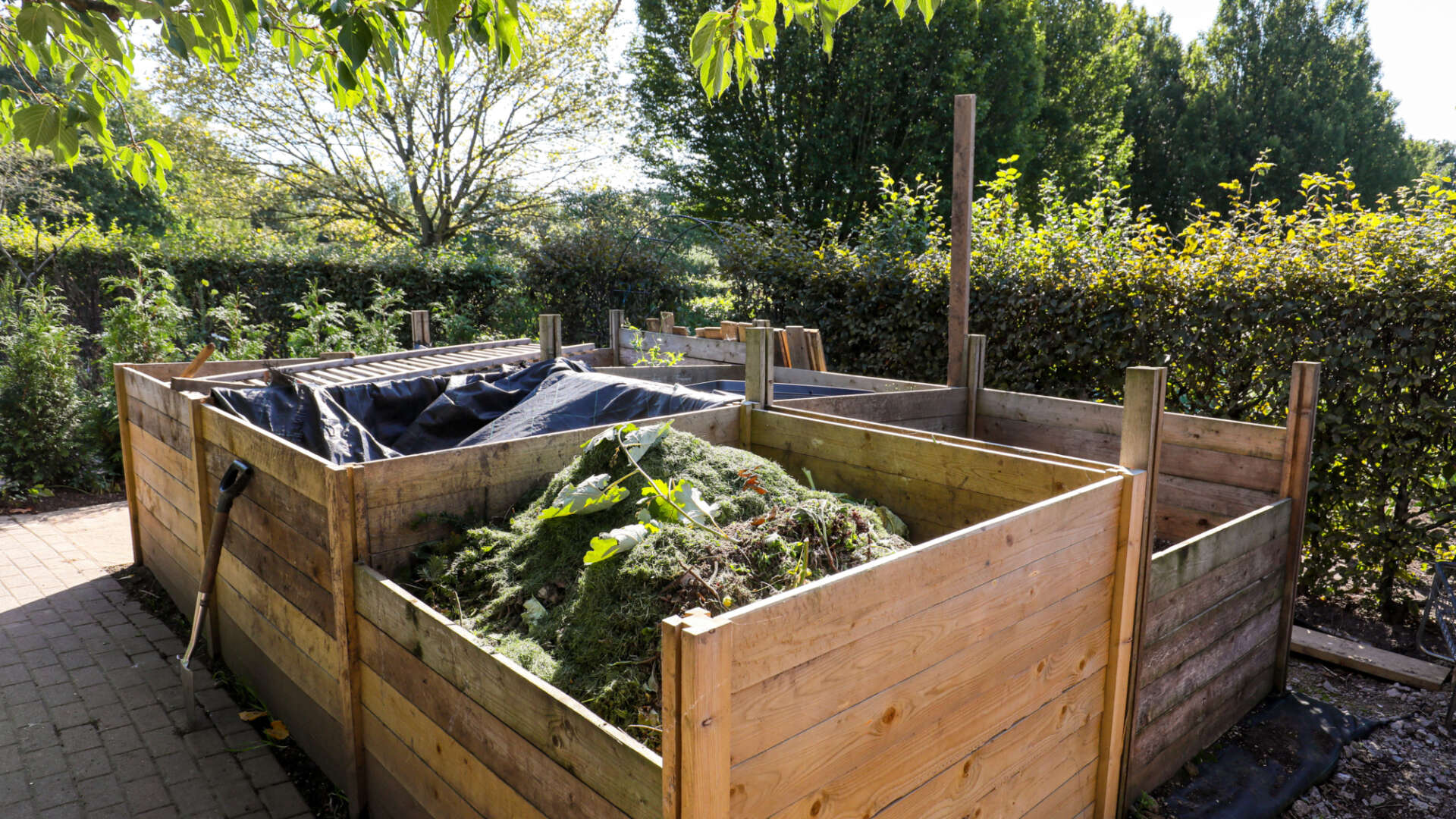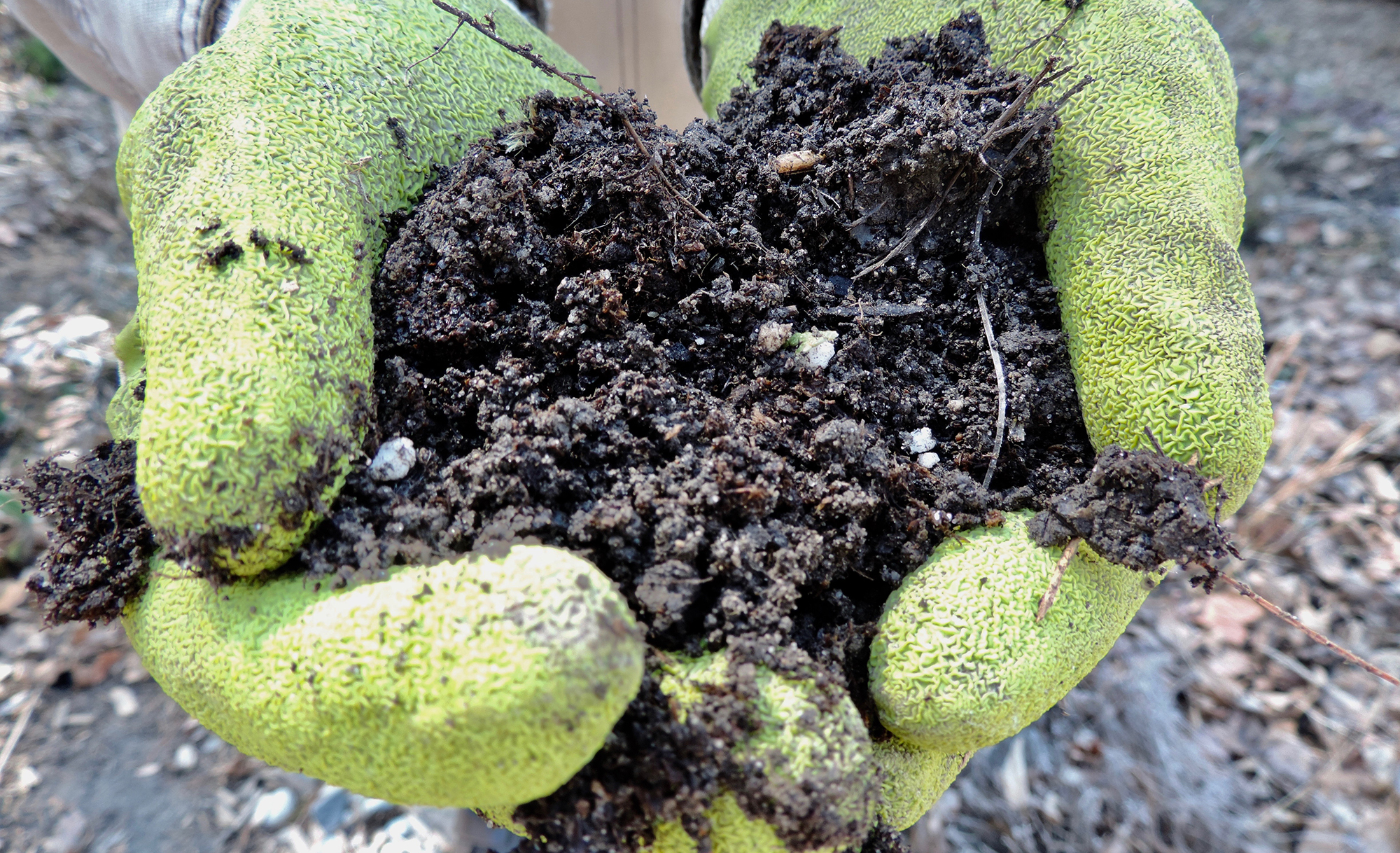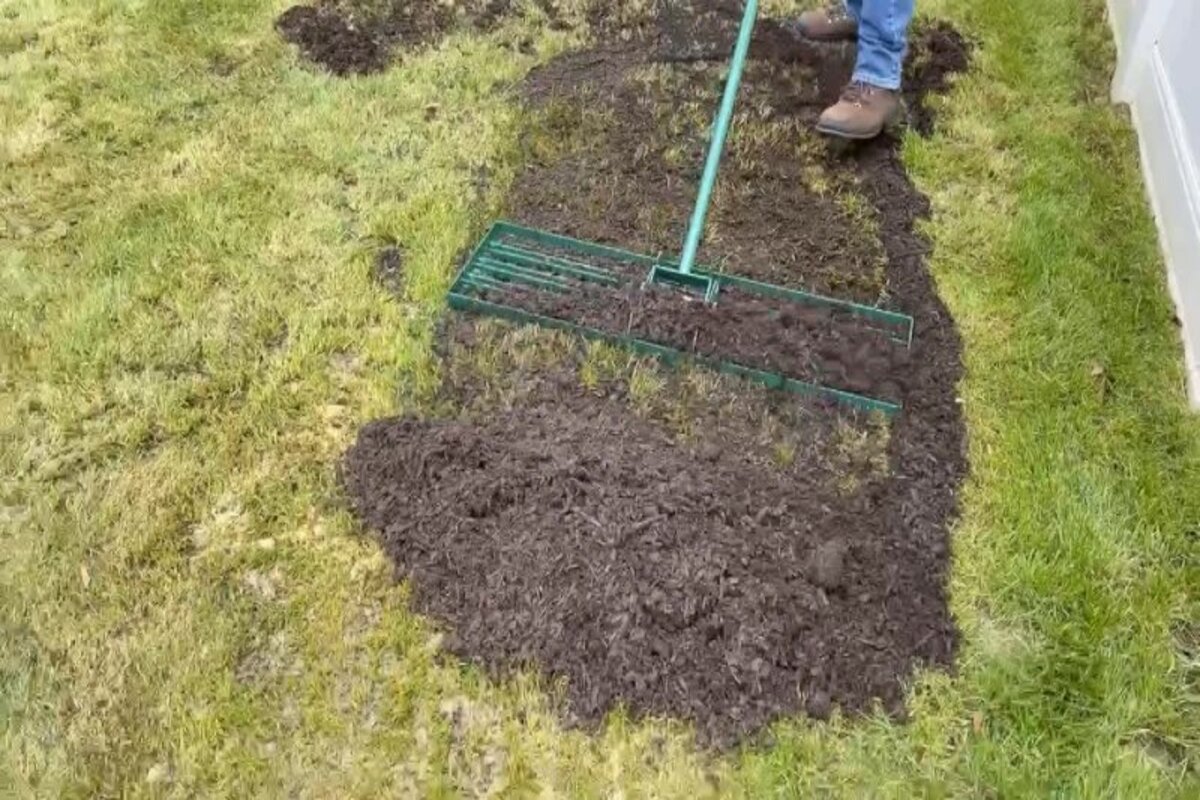Home>Gardening Techniques>DIY Projects>How To Compost Orange Peels


DIY Projects
How To Compost Orange Peels
Modified: January 22, 2024
Learn how to compost orange peels and turn them into nutrient-rich soil for your DIY projects. Reduce waste and create sustainable gardening practices.
(Many of the links in this article redirect to a specific reviewed product. Your purchase of these products through affiliate links helps to generate commission for Chicagolandgardening.com, at no extra cost. Learn more)
Table of Contents
Introduction
Welcome to the DIY Projects guide on how to compost orange peels! Whether you’re an avid gardener looking for sustainable ways to improve your soil or someone who cares about reducing food waste, composting orange peels is a great way to make use of this versatile fruit. Not only will you be reducing waste and saving money on fertilizer, but you’ll also be helping the environment by diverting organic matter from landfills.
Orange peels are rich in nutrients and organic matter, making them an excellent addition to your compost pile. Composting orange peels not only adds valuable nutrients to your compost, but it also helps to balance the pH levels, improve soil structure, and promote healthy microbial activity in your garden. Plus, the compost you create can be used as a natural fertilizer that will nourish your plants and help them thrive.
In this comprehensive guide, we will walk you through the entire process, from preparing the orange peels for composting to using the finished compost in your garden. We will also discuss different composting methods and troubleshooting common issues that may arise during the composting process. So, let’s roll up our sleeves and dive into the wonderful world of composting orange peels!
Benefits of Composting Orange Peels
Composting orange peels provides numerous benefits for both your garden and the environment. Here are some of the key advantages:
- Nutrient-Rich Compost: Orange peels are packed with nutrients such as potassium, phosphorus, and nitrogen. When added to your compost pile, these peels break down and release these essential nutrients into the soil, enriching it and providing a sustainable source of fertilization for your plants.
- Improves Soil Structure: The organic matter in orange peels helps to improve soil structure by increasing its ability to hold water and nutrients. Compost made with orange peels assists in creating a healthy soil environment that promotes strong root development and optimal plant growth.
- Balances pH Levels: Orange peels have a high acidity level, which can be beneficial for plants that prefer acidic soil, such as blueberries, roses, and azaleas. By adding composted orange peels to your garden, you can adjust the pH levels over time, creating an optimal growing environment for these acid-loving plants.
- Reduces Food Waste: Composting orange peels is an excellent way to reduce food waste. Instead of throwing away the peels, which would end up in a landfill and contribute to greenhouse gas emissions, you can transform them into nutrient-rich compost that benefits your garden and the environment.
- Eco-Friendly Alternative: Using composted orange peels as a natural fertilizer is a sustainable and eco-friendly alternative to chemical-based fertilizers. By opting for organic compost, you minimize the use of synthetic chemicals that can have harmful effects on the soil, waterways, and biodiversity.
These are just a few of the many benefits of composting orange peels. Not only will you be reducing waste and helping the environment, but you’ll also be giving your plants a nutrient boost and improving the overall health of your garden. Let’s explore how to prepare orange peels for composting and choose the right method to transform them into nutrient-rich compost.
Preparing Orange Peels for Composting
Before you start composting orange peels, it is important to properly prepare them to ensure quick and efficient decomposition. Here are some steps to follow:
- Cut or Shred: Start by cutting or shredding the orange peels into smaller pieces. This will help them break down faster in the compost pile. You can use a knife or kitchen scissors to cut them into small strips, or use a food processor or blender for a quicker shredding process.
- Remove Stickers and Non-Organic Materials: Make sure to remove any stickers or labels from the orange peels, as they may contain non-organic materials that are not suitable for composting. These can be discarded in the trash or recycling bin.
- Break Down Larger Peels: If you have larger, thicker orange peels, it can be helpful to break them down further to speed up the decomposition process. You can do this by cutting them into smaller segments or even running them through a juicer to extract the juice, using the remaining pulp for composting.
- Mix with Carbon-Rich Materials: Orange peels are considered nitrogen-rich materials, so it is important to balance them with carbon-rich materials in your compost pile. Add equal parts of shredded brown materials such as dry leaves, newspaper, or cardboard to provide the necessary carbon content. This will ensure a well-balanced compost that decomposes properly.
- Avoid Contamination: To prevent any unwanted pests or strong odors, it is best to bury the orange peels deep within the compost pile, rather than leaving them exposed on top. This helps to discourage animals and reduces the chance of attracting flies or other insects.
By following these simple steps, you can properly prepare your orange peels for composting. With the peels cut or shredded into smaller pieces and mixed with carbon-rich materials, you are now ready to choose the ideal composting method. Let’s explore the different composting methods available to you.
Selecting the Right Composting Method
When it comes to composting orange peels, there are several methods you can choose from, depending on your available space, time, and preferences. Here are three popular composting methods to consider:
- Traditional Compost Pile: This method involves creating a compost pile in your backyard. Simply layer the orange peels with other organic materials, such as leaves, grass clippings, and kitchen scraps. Turn the pile periodically to encourage decomposition and provide oxygen. Keep in mind that this method requires more space and regular maintenance, but it is a great option if you have a large garden and enjoy a hands-on approach to composting.
- Tumbler Composter: A tumbler composter is a container with a built-in mechanism that allows for easy turning and aerating of the compost. It provides a convenient and efficient way to compost orange peels without the need for manual turning. Simply add your orange peels and other organic materials to the tumbler and give it a regular spin to mix and aerate the compost. This method is ideal for those with limited space or who prefer a more manageable composting process.
- Vermicomposting: Vermicomposting involves using worms, specifically red wigglers, to break down organic materials, including orange peels. Set up a worm bin by filling a container with bedding material such as shredded newspaper or coconut coir, and add the worms along with your orange peels. The worms will consume the peels and produce nutrient-rich worm castings, also known as vermicompost. Vermicomposting is an excellent option for those with limited outdoor space or who want to compost indoors.
Each composting method has its own advantages and considerations, so choose the one that best fits your needs and resources. Regardless of the method you choose, remember to monitor the moisture levels in your compost pile or bin and maintain the appropriate balance of carbon and nitrogen-rich materials.
Now that you have selected the composting method best suited for you, let’s move on to creating a compost pile with your orange peels and other organic materials.
Creating a Compost Pile with Orange Peels
Now that you have prepared your orange peels and selected the composting method, it’s time to create a compost pile. Follow these steps to create a compost pile with your orange peels:
- Choose a Location: Find a suitable location in your backyard or garden for your compost pile. Ensure it is easily accessible and provides sufficient sunlight and drainage.
- Prepare the Base: Start by creating a base layer of twigs or straw. This will promote airflow and drainage in the compost pile.
- Add Brown Materials: Layer the compost pile with brown materials such as dry leaves, shredded newspaper, or cardboard. This helps create the necessary carbon-rich environment for decomposition.
- Add Orange Peels: Place a layer of your prepared orange peels on top of the brown materials. Spread them evenly to ensure proper distribution throughout the compost pile.
- Add Green Materials: Layer the orange peels with green materials, such as grass clippings or kitchen scraps, to provide nitrogen and aid in the decomposition process.
- Moisten the Pile: To keep the compost pile adequately moist, water it lightly after each layer. Avoid making it too wet, as excessive moisture can lead to anaerobic conditions.
- Repeat Layers: Continue layering the pile with alternating brown and green materials, including additional orange peels, until you have used up all your compostable materials.
- Cover the Pile: Covering the compost pile with a tarp or a layer of straw helps retain moisture and heat, speeding up the decomposition process.
- Turn the Pile: Every few weeks, use a garden fork or pitchfork to aerate the compost pile. Turning the pile helps mix the materials, introduces oxygen, and speeds up decomposition.
Remember to maintain the appropriate balance of carbon-rich (browns) and nitrogen-rich (greens) materials in your compost pile, including your orange peels. This ensures a well-balanced compost that decomposes efficiently.
Now that you have created your compost pile with orange peels, it’s important to know how to maintain its health and troubleshoot any issues that may arise. Let’s explore how to maintain the compost pile effectively.
Maintaining the Compost Pile
Proper maintenance of your compost pile is essential to ensure efficient decomposition and the production of high-quality compost. Here are some key tips for maintaining your compost pile:
- Monitor Moisture Levels: Regularly check the moisture level of your compost pile. It should feel like a damp sponge; not too wet or too dry. If it’s too dry, add water to moisten the pile. If it’s too wet, add more dry materials like leaves or shredded newspaper to absorb the excess moisture.
- Aerate the Pile: Turning the compost pile regularly helps introduce oxygen and prevents the formation of anaerobic conditions. Use a garden fork or pitchfork to turn the pile every few weeks, ensuring that all the materials are mixed well.
- Maintain Temperature: The compost pile should ideally reach temperatures between 110°F and 160°F (43°C and 71°C). Regularly check the internal temperature using a compost thermometer. If the temperature is too low, add nitrogen-rich materials like grass clippings to heat up the pile. If the temperature is too high, add more carbon-rich materials to cool it down.
- Balance Carbon and Nitrogen: It’s important to maintain the proper balance of carbon-rich (browns) and nitrogen-rich (greens) materials in your compost pile. If the pile seems slow to decompose, add more greens like kitchen scraps. If it smells strong and is not breaking down, add more browns like leaves or shredded paper.
- Patience is Key: Composting takes time, so be patient and allow the natural decomposition process to occur. Depending on various factors such as temperature, moisture, and the size of the materials, it can take several months to a year for the compost to be fully ready for use.
- Keep Out Pests: To prevent pests like rodents or insects from being attracted to your compost pile, avoid adding meat, dairy products, or oily foods. Ensure that the pile is covered and secure, and avoid placing materials like orange peels on top where they are easily accessible.
By following these maintenance tips, you can ensure that your compost pile remains healthy and productive. Patience, regular monitoring, and maintaining the right balance of materials will result in nutrient-rich compost that will benefit your garden. Next, let’s explore how to troubleshoot common issues that may arise during the composting process.
Troubleshooting Common Issues
While composting orange peels can be a rewarding process, it’s not uncommon to encounter some challenges along the way. Here are some common issues and how to troubleshoot them:
- Slow Decomposition: If your compost pile is taking longer than expected to break down, it may indicate an imbalance of carbon and nitrogen. Add more nitrogen-rich materials like grass clippings or kitchen scraps to speed up decomposition. Shredding the orange peels into smaller pieces can also help accelerate the process.
- Unpleasant Odors: Foul smells often occur when the compost pile is too wet or lacks sufficient airflow. To combat this issue, ensure proper moisture levels by adding dry materials like leaves or shredded newspaper to absorb excess moisture. Turning the pile regularly will also promote airflow and prevent anaerobic conditions.
- Presence of Pests: If pests like rodents or flies are attracted to your compost pile, it may indicate improper management. Avoid adding meat, dairy, or oily foods that can attract pests. Make sure the pile is covered securely, and bury orange peels and other kitchen scraps deep within the pile to discourage animals and insects.
- Temperature Fluctuations: Inconsistent temperature in the compost pile can result from a lack of proper carbon and nitrogen balance. Adjust the ratio of green to brown materials to achieve an optimal temperature range of 110°F to 160°F (43°C to 71°C). This can be done by adding more greens for higher temperatures or more browns for lower temperatures.
- Mold Growth: Mold is a natural part of the decomposition process and is generally harmless. However, if mold growth becomes excessive or indicates fungal imbalances, try adding more dry materials to the pile to reduce moisture levels and promote better airflow.
- Too Dry or Too Wet: If your compost pile is either too dry or too wet, it can hinder decomposition. Monitor moisture levels and adjust accordingly. Add water if the pile is dry, or add dry materials if it’s too wet. Maintaining the moisture content of a damp sponge is the goal for a healthy compost pile.
By troubleshooting common issues and making the necessary adjustments, you can overcome obstacles in composting orange peels. Remember that composting is an ongoing process that requires attention and experimentation. With patience and persistence, you’ll be rewarded with nutrient-rich compost that can benefit your garden and reduce waste.
Now that you have successfully composted your orange peels, let’s explore how to use the finished compost in your garden.
Using Composted Orange Peels in the Garden
Composted orange peels are a valuable resource that can be used to nourish your garden and enhance plant growth. Here are some ways you can use the finished compost in your garden:
- Apply as a Top Dressing: Spread a thin layer of compost over the soil surface around established plants. This acts as a slow-release fertilizer, enriching the soil and providing essential nutrients to the plants.
- Mix into Potting Mix: Blend the compost with potting mix to create a nutrient-rich growing medium for container plants. This helps improve water retention, root development, and overall plant health.
- Incorporate into Soil: When preparing a new garden bed or transplanting seedlings, mix the compost into the soil. This improves soil structure, enhances nutrient availability, and promotes beneficial microbial activity.
- Create Compost Tea: Steep a handful of composted orange peels in water for a few days to create compost tea. Use this nutrient-rich liquid to water your plants and provide a boost of beneficial microorganisms.
- Feed Your Lawn: Spread a thin layer of composted orange peels over your lawn, then lightly rake it into the grass. This adds nutrients to the soil, improves soil health, and enhances the overall appearance of your lawn.
- Revitalize Potted Plants: If your potted plants are showing signs of poor growth or nutrient deficiency, top-dressing them with composted orange peels can rejuvenate and replenish the soil.
Remember to incorporate the composted orange peels into the garden in moderation. While they are rich in nutrients, excessive use can alter soil pH or result in nutrient imbalances. Additionally, continue regular composting to ensure a steady supply of nutrient-rich compost for your garden.
Now that you know how to use composted orange peels in your garden, you can reap the benefits of your composting efforts and enjoy healthier, more vibrant plants.
Conclusion
Composting orange peels is a rewarding and sustainable way to reduce food waste, nourish your garden, and contribute to a healthier environment. By following the steps outlined in this guide, you can transform orange peels into nutrient-rich compost that benefits your plants and enhances soil fertility.
We discussed the benefits of composting orange peels, such as providing essential nutrients, improving soil structure, balancing pH levels, and reducing food waste. The preparation of orange peels for composting involves cutting or shredding them, removing non-organic materials, and mixing them with carbon-rich materials.
We explored various composting methods, including traditional compost piles, tumbler composters, and vermicomposting. Each method has its advantages and considerations, allowing you to choose the one that best suits your needs and resources.
To create a compost pile with orange peels, we learned to layer them with brown and green materials, monitor moisture levels, turn the pile for aeration, and maintain the appropriate balance of carbon and nitrogen-rich materials.
We also discussed the importance of maintaining the compost pile by monitoring moisture levels, aerating the pile, maintaining temperature, balancing carbon and nitrogen, and keeping out pests.
If issues arise during the composting process, we provided troubleshooting tips for slow decomposition, unpleasant odors, pests, temperature fluctuations, mold growth, and moisture imbalances.
Finally, we explored the various ways to use composted orange peels in the garden, such as top dressing, mixing into potting mix, incorporating into soil, creating compost tea, feeding the lawn, and reviving potted plants.
Now armed with the knowledge and steps to compost orange peels, you can contribute to a more sustainable and healthier gardening practice while reducing waste and adding valuable nutrients to your garden. So, let’s grab those orange peels and get composting!








